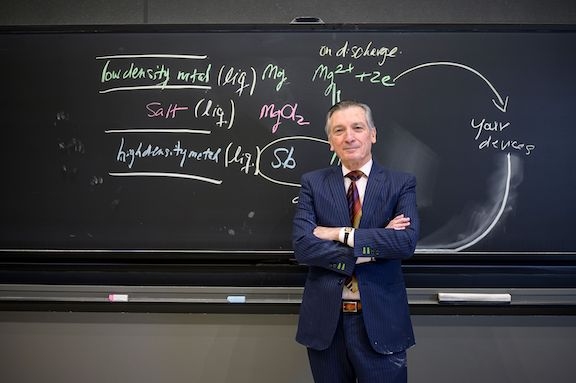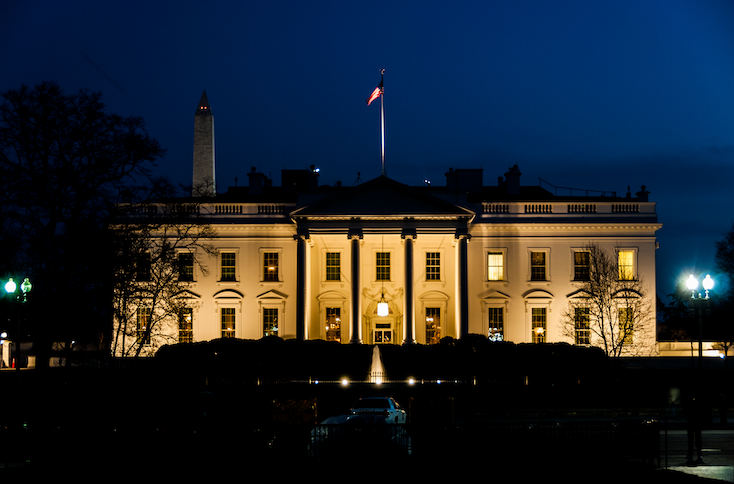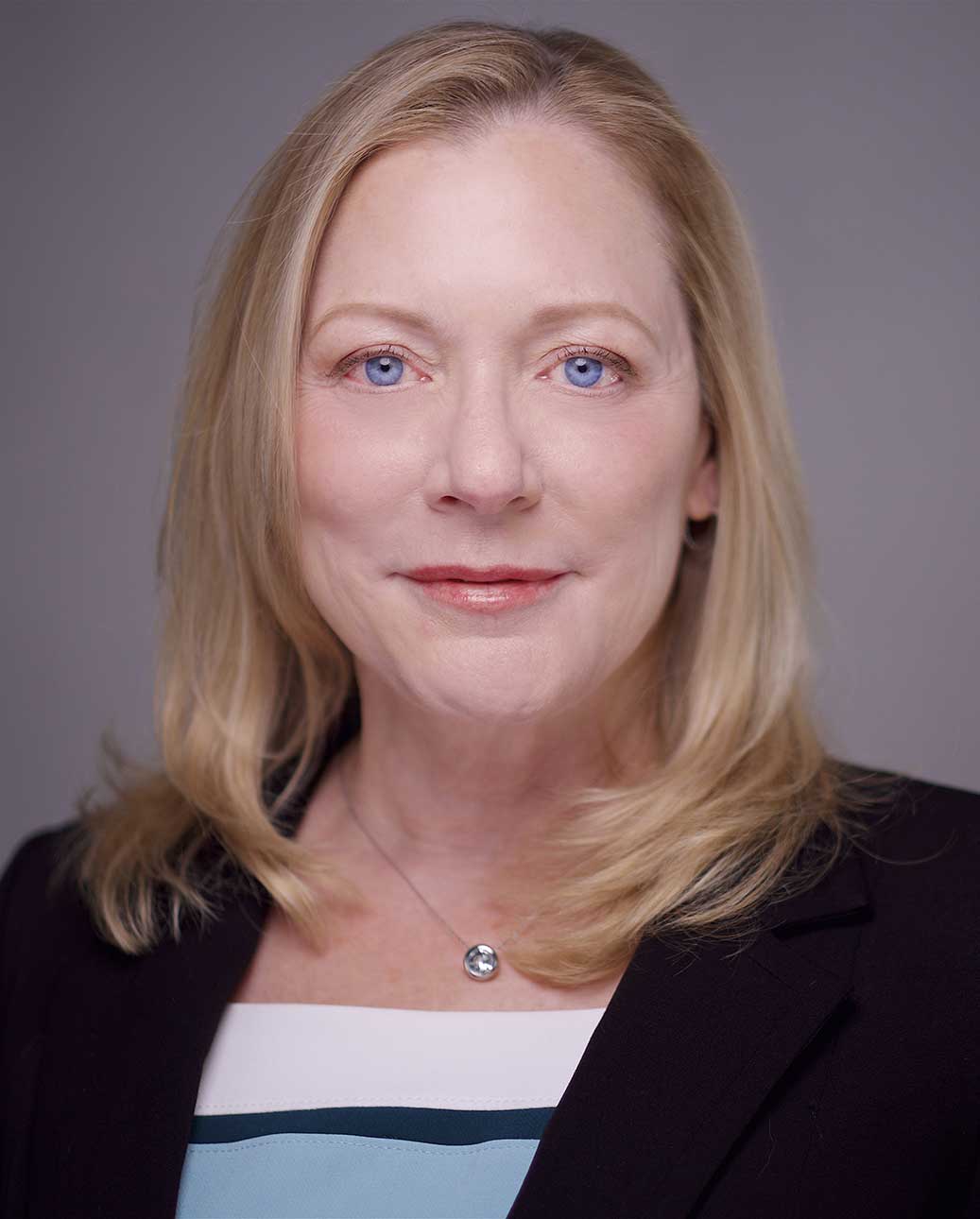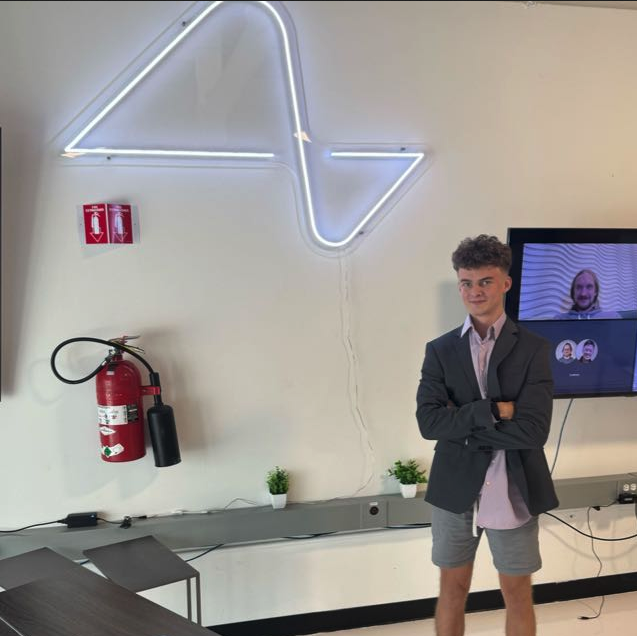Renewable, teaching, and world peace with Professor Emeritus Donald Sadoway, renowned electrochemist and an influential educator at MIT
Professor Emeritus Donald Sadoway, renowned electrochemist and influential educator, reflects on 45 years at MIT. Over his long career as an electrochemist and professor, Donald Sadoway has earned an impressive variety of honors, from being named one of Time magazine’s 100 most influential people in 2012 to appearing on “The Colbert Report,” where he talked about “renewable energy and world peace,” according to Comedy Central.

Renewable, teaching, and world peace with Professor Emeritus Donald Sadoway, renowned electrochemist and an influential educator at MIT
Over his long career as an electrochemist and professor, Donald Sadoway has earned an impressive variety of honors, from being named one of Time magazine’s 100 most influential people in 2012 to appearing on “The Colbert Report,” where he talked about “renewable energy and world peace,” according to Comedy Central.
What does he personally consider to be his top achievements?
“That’s easy,” he says immediately. “For teaching, it’s 3.091,” the MIT course on solid-state chemistry he led for some 18 years. An MIT core requirement, 3.091 is also one of the largest classes at the Institute. In 2003 it was the largest, with 630 students. Sadoway, who retires this year after 45 years in the Department of Materials Science and Engineering, estimates that over the years he’s taught the course to some 10,000 undergraduates.
A passion for teaching
Along the way he turned the class into an MIT favorite, complete with music, art, and literature. “I brought in all that enrichment because I knew that 95 percent of the students in that room weren’t going to major in anything chemical and this might be the last class they’d take in the subject. But it’s a requirement. So they’re 18 years old, they’re very smart, and many of them are very bored. You have to find a hook [to reach them]. And I did.”
In 1995, Sadoway was named a Margaret MacVicar Faculty Fellow, an honor that recognizes outstanding classroom teaching at the Institute. Among the communications in support of his nomination:
“His contributions are enormous and the class is in rapt attention from beginning to end. His lectures are highly articulate yet animated and he has uncommon grace and style. I was awed by his ability to introduce playful and creative elements into a core lecture…”
Bill Gates would agree. In the early 2000s Sadoway’s lectures were shared with the world through OpenCourseWare, the web-based publication of MIT course materials. Gates was so inspired by the lectures that he asked to meet with Sadoway to learn more about his research. (Sadoway initially ignored Gates’ email because he thought his account had been hacked by MIT pranksters.)
Research breakthroughs
Teaching is not Sadoway’s only passion. He’s also proud of his accomplishments in electrochemistry. The discipline that involves electron transfer reactions is key to everything from batteries to the primary extraction of metals like aluminum and magnesium. “It’s quite wide-ranging,” says the John F. Elliott Professor Emeritus of Materials Chemistry.
Sadoway’s contributions include two battery breakthroughs. First came the liquid metal battery, which could enable the large-scale storage of renewable energy. “That represents a huge step forward in the transition to green energy,” said António Campinos, president of the European Patent Office, earlier this year when Sadoway won the 2022 European Inventor Award for the invention in the category for Non-European Patent Office Countries.
On “The Colbert Report,” Sadoway alluded to that work when he told Stephen Colbert that electrochemistry is the key to world peace. Why? Because it could lead to a battery capable of storing energy from the sun when the sun doesn’t shine and otherwise make renewables an important part of the clean energy mix. And that in turn could “plummet the price of petroleum and depose dictators all over the world without one shot being fired,” he recently recalled.
The liquid metal battery is the focus of Ambri, one of six companies based on Sadoway’s inventions. Bill Gates was the first funder of the company, which formed in 2010 and aims to install its first battery soon. That battery will store energy from a reported 500 megawatts of on-site renewable generation, the same output as a natural gas power plant.
Then, in August of this year, Sadoway and colleagues published a paper in Nature about “one of the first new battery chemistries in 30 years,” Sadoway says. “I wanted to invent something that was better, much better,” than the expensive lithium-ion batteries used in, for example, today’s electric cars.
That battery is the focus of Avanti, one of three Sadoway companies formed just last year. The other two are Pure Lithium, to commercialize his inventions related to that element, and Sadoway Labs. The latter, a nonprofit, is essentially “a space to try radical innovations. We’re gonna start working on wild ideas.”
Another focus of Sadoway’s research: green steel. Steelmaking produces huge amounts of greenhouse gases. Enter Boston Metal, another Sadoway company. This one is developing a new approach to producing steel based on research begun some 25 years ago. Unlike the current technology for producing steel, the Boston Metal approach — molten oxide electrolysis — does not use the element at the root of steel's problems: carbon. The principal byproduct of the new system? Oxygen.
In 2012, Sadoway gave a TED talk to 2,000 people on the liquid metal battery. He believes that that talk, which has now been seen by almost 2.5 million people, led to the wider publicity of his work — and science overall — on “The Colbert Report” and elsewhere. “The moral here is that if you step out of your comfort zone, you might be surprised at what can happen,” he concludes.
Colleagues' reflections
"I met Don in 2006 when I was working for the iron and steel industry in Europe on ways to reduce greenhouse gas emissions from the production of those materials," says Antoine Allanore, professor of metallurgy, Department of Materials Science and Engineering. "He was the same Don Sadoway that you see in recordings of his lectures: very elegant, very charismatic, and passionate about the technical solutions and underlying science of the process we were all investigating; electrolysis. A few years later, when I decided to pursue an academic career, I contacted Don and became a postdoctoral associate in his lab. That ultimately led to my becoming an MIT professor. People don’t believe me, but before I came to MIT the only thing I knew about the Institute was that Noam Chomsky was there … and Don Sadoway. And I felt, that’s a great place to be. And I stayed because I saw the exceptional things that can be accomplished at MIT and Don is the perfect example of that."
"I had the joy of meeting Don when I first arrived on the MIT campus in 1994," recalls Felice Frankel, research scientist in the MIT departments of Chemical Engineering and Mechanical Engineering. "I didn’t have to talk him into the idea that researchers needed to take their images and graphics more seriously. He got it — that it wasn’t just about pretty pictures. He was an important part of our five-year National Science Foundation project — Picturing to Learn — to bring that concept into the classroom. How lucky that was for me!"
"Don has been a friend and mentor since we met in 1995 when I was an MIT senior," says Luis Ortiz, co-founder and chief executive officer, Avanti Battery Co. "One story that is emblematic of Don's insistence on excellence is from when he and I met with Bill Gates about the challenges in addressing climate change and how batteries could be the linchpin in solving them. I suggested that we create our presentation in PowerPoint [Microsoft software]. Don balked. He insisted that we present using Keynote on his MacBook Air, because 'it looks so much better.' I was incredulous that he wanted to walk into that venue exclusively using Apple products. Of course, he won the argument, but not without my admonition that there had better not be even a blip of an issue. In the meeting room, Microsoft’s former chief technology officer asked Don if he needed anything to hook up to the screen, 'we have all those dongles.' Don declined, but gave me that knowing look and whispered, 'You see, they know, too.' I ate my crow and we had a great long conversation without any issues."
"I remember when I first started working with Don on the liquid metal battery project at MIT, after I had chosen it as the topic for my master's of engineering thesis," adds David Bradwell, co-founder and chief technology officer, Ambri. "I was a wide-eyed graduate student, sitting in his office, amongst his art deco decorations, unique furniture, and historical and stylistic infographics, and from our first meeting, I could see Don’s passion for coming up with new and creative, yet practical scientific ideas, and for working on hard problems, in service of society. Don’s approaches always appear to be unconventional — wanting to stand out in a crowd, take the path less trodden, both based on his ideas, and his sense of style. It’s been an amazing journey working with him over the past decade-and-a-half, and I remain excited to see what other new, unconventional ideas, he can bring to this world."


































